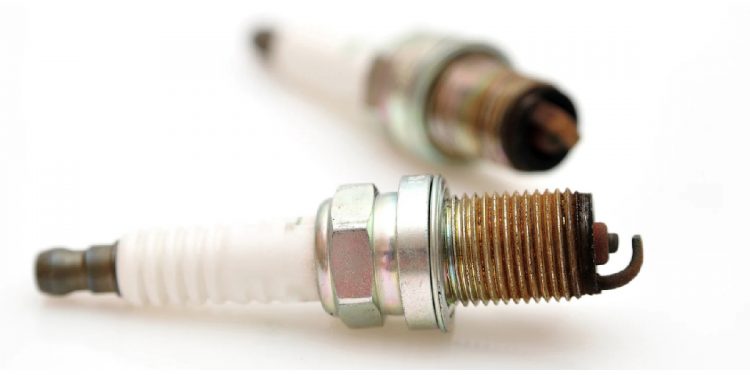Spark plugs are small parts that play an incredibly vital role in how your car functions. Without properly working spark plugs, your vehicle more than likely will not be able to run at all. Think of spark plugs as being the heart of a car’s ignition system. First and foremost, spark plugs create an artificial bolt of lightning in the engine’s cylinder head. The voltage it transmits is very high as it needs enough to create a spark within the combustion chamber.
Basically, the spark plug has one end that takes in electricity that creates a “spark” at the other end. This process ignites the air and gas in the cylinders, thus creating combustion and firing up your engine. As your car drives, the spark plugs continue to fire and ignite to keep the engine going. When this spark jumps between the two electrodes, it burns off small bits of metal from each one and, over time, the gap grows to a position where it can’t make the spark jump anymore.
Because they are so crucial to your vehicle’s operation, the spark plugs’ condition directly relates to the performance of your engine. If they are worn out, you could experience worse fuel economy because they are not effectively burning the fuel that is going into the engine. You could also experience engine misfires because bad spark plugs delay the combustion effect. And let’s not forget about that dreaded “Check Engine” light that could turn on from these issues.
Click To Shop All Spark Plugs Here
Signs of Bad Spark Plugs
Spark plugs are critical in keeping your engine running and performing optimally. So it’s important to understand your engine and know how to read the condition of your spark plugs. If the spark plugs are damaged, it can lead to a host of problems that are less than pleasant. Initially, you may notice signs of bad plugs if yours are getting old, because they can make the engine act differently. For instance, it may start to idle more roughly, surge, or even misfire and you could also have trouble starting the car and accelerating.
If the engine is noisy when at a standstill, you likely have a problem in your ignition system and it could certainly be the spark plugs. Misfires are harder to miss, as your engine will shake so much that you could feel the vibrations throughout the entire car. This results in poor performance and increased emissions. That leads us to the next point, if you are visiting the gas station more often, it could be because of bad spark plugs. Deteriorated spark plugs can account for as much as a 30-percent loss in fuel economy, which is something that you can definitely feel in your pockets.
Reading / Inspecting Spark Plugs
When reading the spark plugs, you will likely find one of the following conditions: normal, fouled, oiled, wet, burned, or worn/broken electrodes. First, you need to remove the spark plug you want to examine for signs of damage. Look at the portion of the spark plug that was in the cylinder for any of the aforementioned factors. A normal spark plug will have brown or gray deposits on the side electrode. A wet spark plug can be caused by engine flooding; you can clean these and let them dry out before reinstalling. A carbon-fouled plug will have dry soot on the electrodes and insulator tip. Dark, oily deposits on the electrodes indicate an oil-fouled plug, which could mean that oil is leaking into the cylinders and getting past the worn pistons.
Blisters on the insulator tip, melted electrodes, or white deposits indicate that your spark plug is or running way too hot. Worn and eroded electrodes are signs of a spark plug that needs to be replaced ASAP. Your spark plugs may be the wrong ones if you notice the electrodes are broken off or flattened. This is because a spark plug that is too large can cause damage to the engine while one that is too small can cause spark plug fouling and poor fuel economy.
Replacing Spark Plugs
The good news is that spark plugs are fairly durable and do not need to be replaced very often. If you service your car or get a tune-up, chances are the mechanic is checking your spark plugs and replacing them if necessary. If you are looking for a time frame for when they should be changed, the general rule of thumb is between 30,000 to 80,000 miles. You can check your owner’s manual or the manufacturer’s website for specific information pertaining to your make and model of vehicle.
For the most part, changing your spark plugs is relatively easy and can be done right in the confines of your own home. In some vehicles, though, the process can be a bit more involved. It all comes down to their location in the underhood compartment and what obstacles are in the way of getting to them. Sometimes older spark plugs can be hard to pull out and will require some special tools to get them loose enough to remove. You could always opt to get them done at a shop, which should not take very long to do.




